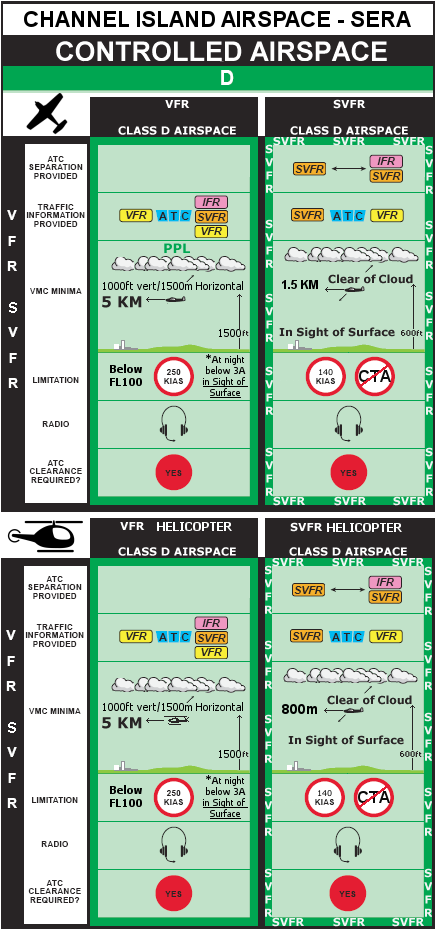Controlled Airspace
VFR and Special VFR flight is permitted in the Channel Islands Control Zone (Class D)
VFR flight is permitted in the Channel Islands Control Areas (1) and (2) (Class D)
VFR and Special VFR Flight is not permitted in the Channel Islands TMA (Class A)
In basic terms Channel Islands Airspace is all controlled and pilots require a clearance to operate within it. Certain conditions may be imposed on this clearance in order to ensure that VFR or Special VFR flights will not hinder IFR Traffic and to ensure that appropriate de-confliction takes place.
VFR clearances will normally contain Entry Point, Specified Route, Clearance Limit, Altitude/Level and/or heading restrictions.
Deviating from a specified clearance must only be undertaken after discussion with Jersey ATC.
Level restrictions normally come in the two forms: A “NOT ABOVE” a specified Altitude or Flight Level but may also be to “MAINTAIN” a specified Altitude or Flight Level
The Special VFR Pilot is responsible for informing Air Traffic Control if deviation from a given clearance becomes necessary due to deteriorating weather conditions or for any other reason.
STANDARDISED EUROPEAN RULES OF THE AIR APPLY IN CHANNEL ISLAND AIRSPACE WITH NO DEROGATIONS.
The following table depicts graphically the VFR/ SVFR minima for both Fixed Wing and Helicopter operations inside the Class D airspace of the Channel Islands CTR.

